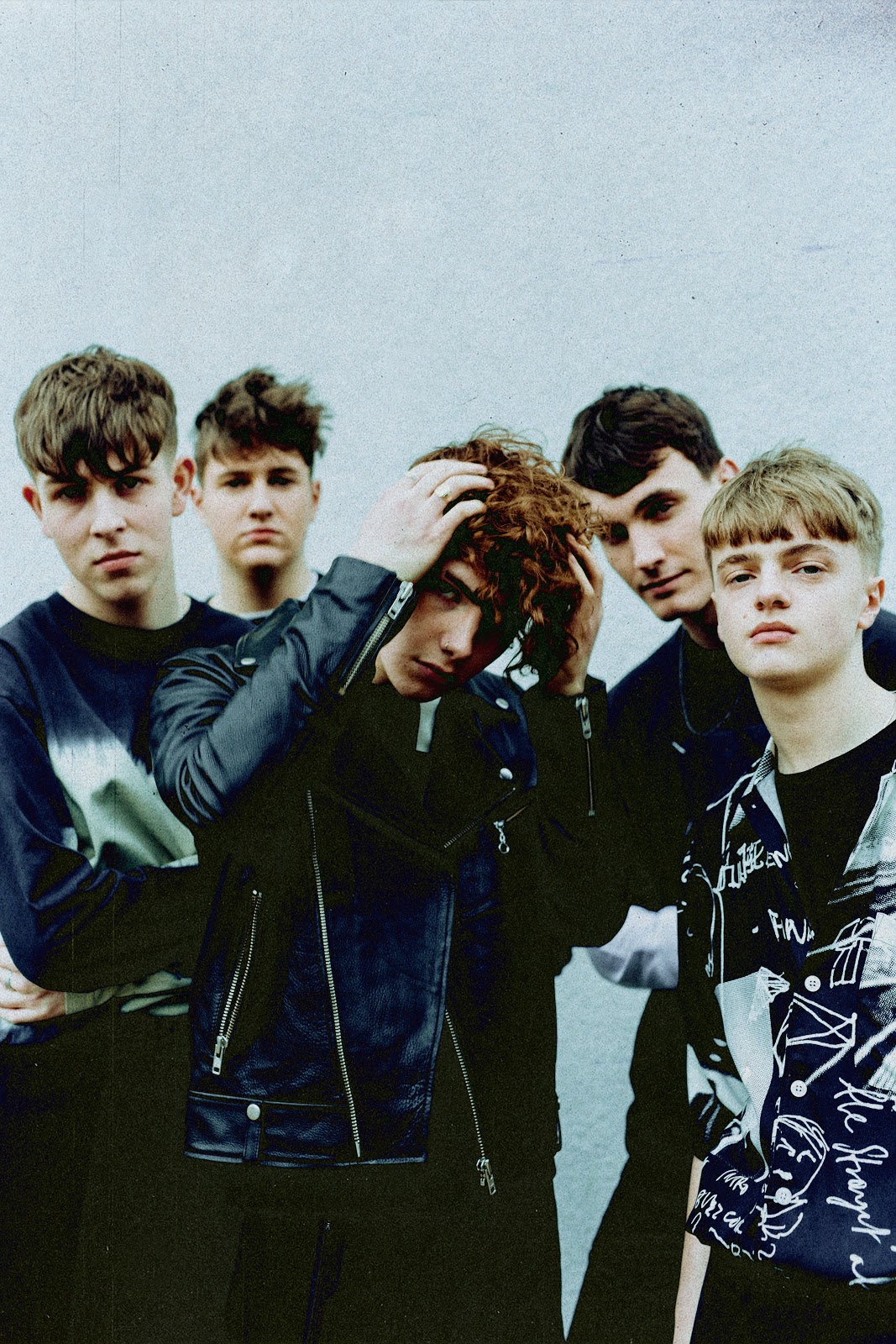Every so often in music, there comes a rare moment when you can see, or rather hear, history being made right before your very eyes. In the music world the word “classic” is thrown around very liberally when giving albums praise, especially in Hip-Hop. Good or even great releases are often lauded with the term, which in reality should be used sparingly, only for albums that significantly change and impact their genre as a whole. For an album to be a true “classic”, it must create a rift in the history of music. In Hip-Hop, there exists a world before releases like Enter the 36 Chambers, or The Chronic, or The Low End Theory, and a world after. In Jazz there exists a world before Kind of Blue, A Love Supreme, Ah Um, and a world after. Usually it takes the aid of several years following the releases of these albums to be able to see the full scope of their influence on music as a whole. But sometimes, on some very rare occasions, an album hits the world like a meteor, and the next day everything is different.
On Monday night, at around one in the morning, Kendrick Lamar’s third studio album To Pimp A Butterfly hit the world like a meteor, a full week before its scheduled release date, and one of those rare moments occurred. It’s going to be years before we really know if this album will truly be a bonafide classic; but what we know right now is that it’s pretty fuckin incredible.

To Pimp A Butterfly was one of the most anticipated albums of 2015, as it has now been three years since Lamar’s sophomore effort good kid, m.A.A.d city dropped. The critically lauded major label debut was a concept album based around a non-linear narrative, depicting the trials and tribulations of Lamar’s adolescence in his native Compton, California. The album tackled complex and dark issues like alcoholism, addiction, crime, death, greed, poverty, violence, and love in a mature and artful way while simultaneously being catchy and infectious enough to capture the attention and love of the entire mainstream rap audience and rocket Lamar into superstardom.
The pressure for Lamar to follow up an album like that couldn’t have been greater, with the Compton MC setting the expectations higher and higher for himself with a slew of incredible guest features following the album; from his infamous “Control” verse to his BET Awards cypher to stellar appearances on many of his peer’s records, such as Pusha T’s “Nosetalgia”, Flying Lotus’ “Never Catch Me”, and Schoolboy Q’s “Collard Greens”.
But amazingly enough, it seems that Kendrick has managed to not only meet the expectations set for him by his already incredible body of work, but also to shatter those expectations and carve out a new frontier for himself as an MC and an artist.
Be warned, if you go into this album wanting more bangers like the ones you got on good kid, m.A.A.d city, you will be sorely disappointed. Kendrick is way beyond that now. He traded the sleek, modern, more commercial production found on a majority of GKMC tracks for a warm, soulful, funky, and more timeless sound. In interviews leading up to the release of the album Kendrick himself stated that he was very influenced by Parliament and other classic 70’s and 80’s funk and soul acts for this record. This influence was made apparent on the two singles “i”, an upbeat song which features an interpretation of the Isley Brothers composition “That Lady”, and “King Kunta”, a track fueled black pride, determination and excellent rap shit talk, the closest Kendrick gets on the record to the boastful punch lines of GKMC cuts like “Backseat Freestyle”. He raps “I can dig rapping/but a rapper with a ghostwriter, what the fuck happen?/I swore I wouldn’t tell, but most of ‘yall sharing bars like you got the bottom bunk in a two man cell”. The song is accompanied by an almost creepy sounding, chilling, bassy, thumping, and overwhelmingly Funkadelic influenced beat.
Listen: “King Kunta” – Kendrick Lamar
Listen: “Wesley’s Theory” – Kendrick Lamar

Lamar pulls in a truly impressive list of collaborators to build the unique sound of To Pimp A Butterfly. George Clinton adds some vocals and has a heavy songwriting influence on the opening track, “Wesley’s Theory”, a song that deals with fame and its consequences, a theme that runs through much of the album and is the concept behind the metaphor that is its title. This explosive opening track features production by Flying Lotus, a funky as shit bass line provided by frequent Flying Lotus collaborator Thundercat, a musician who’s distinctive and warm sound can be found everywhere on this record, some floating G-Funk reminiscent synths in the background, and a short spoken caveat by Dr. Dre in which he states “Remember the first time you came out to the house? You said you wanted a spot like mine. But remember, anybody can get it. The hard part is keeping it, motherfucker”. Right now Kendrick is perhaps more equipped than any other rapper to tackle the subject of fame, as he went in a period of a few years from being an unknown Compton teenage rapper to being the hottest rapper in the game, beloved by fans and critics alike and hailed as the messiah of hip-hop.
Other notable guests on the album include Pharrell, who produces the track “Alright”, and acclaimed soul singer Bilal, who contributes vocals to a number of tracks, including “Institutionalized”. This cut, which features a beautiful and soulful instrumental near the first half, is sonically in line with Bilal’s early 2000’s output during his heyday. A little after a minute in, the beat changes up with some harder hitting drums and jazzy grooves coming in, in addition to a bridge by none other than Snoop Dogg. Kendrick manages to coax out one of Snoop’s most interesting vocal deliveries since his 1993 debut Doggystyle, showing us that more than 20 years later Snoop can still turn out some of the most inventive flows of any rapper out there.
Lyrically this song touches on the maddening effect that living in crime ridden and impoverished places like Compton can have on people, driving them to act in violent and dangerous ways out of greed, envy, and desperation. To top it off, Kendrick includes a verse at the end that acts as a dialogue between himself and a friend of his from Compton, who Kendrick has taken to a big music industry award show. His friend can’t control his anger and envy when placed in the presence of such gross opulence, and says that he wants to rob everybody at the show and bring the jewelry and money back to the poor people of Compton. This whole dialogue adds a dimension to this track about the alienating aspects of fame and the theme of Kendrick’s own “survivors guilt” that runs throughout the album. I could say it’s another stand out cut on the record, but almost every single cut on the record is damn near perfect.
In addition to the previously mentioned big name artists, Kendrick also includes some lesser-known guests on the album. Underground Los Angeles producer Knxwledge, currently signed to Stones Throw Records, is known for his beautiful, lush, experimental and sample based sound, and contributes the instrumental for “Momma”, a heartfelt and warm track about a humbling trip that Kendrick takes back to his native Compton, showing that although the rewards of fame may seem great, nothing is greater than being right back at home. This song marks a turning point in the album. The previous tracks have mostly dealt with fame and the tolls that it can take on someone, however from this song out Kendrick touches more often on topics such as racism, love, history, politics, morality, and duty.
This is where the key difference between good kid, m.A.A.d city and To Pimp A Butterfly comes. GKMC was an incredibly personal album, a highly structured narrative about Kendrick’s individual experience and the experience of growing up in his specific city. You can even tell by the cover of the album, which features a portrait of Kendrick as a baby with his whole family. It’s his story, his history. In addition, the instrumentals are more in line with what traditional hip-hop and gangsta rap instrumentals are expected to sound like, the kind of music that Compton has been known to produce for the past few decades.
On the other hand, To Pimp A Butterfly is an album that is on an incredibly grand scale, a scale much wider than that of GKMC. Where the cover of GKMC was a photograph of Kendrick as an infant with his family, To Pimp A Butterfly’s cover features a large group of shirtless black men and children, posing with 40 oz. bottles, chains, and stacks of money. They pose in front of none other than the White House, and an old white judge lies in his robes, dead at their feet.
This album is about the larger experience of being black in America, the experience of being poor in America, of being famous in America, of consumerism in America, of being alive in America. It taps deep into the cultural conscious and history of Black America, through the lyrics and overwhelmingly through the instrumentals, which places this album in line with other recent releases such as D’Angelo’s Black Messiah, Flying Lotus’ You’re Dead and even Jellowstone Records’ new self-titled Kings album which I recently reviewed; all records that celebrate African-American music’s long history while simultaneously pushing it forward.
To Pimp A Butterfly is too dense and complex and all-encompassing to explain away or boil down its contents without years of listening to digest it all. I could write an essay about every track on this album and I probably wouldn’t do any of them justice. I could write about “Hood Politics”, the monster of a track that features some of the most sublime and soulful grooves on the album as an intro (again provided by Thundercat) which lead into a cold ass beat that samples none other than Sufjan Stevens, a beat which showcases some of Kendrick’s best flows ever and lines like “Demo-crips, Re-blood-icans/red state versus a blue state, which one you govern in?” (HOLY SHIT). I could write about “How Much A Dollar Cost”, a track which features Ronald Isley of the Isley Brothers on vocals, has one of the heaviest and best instrumentals on the whole album, and tells a powerful narrative about a dialogue Kendrick has with God, who visits him in the form of a homeless man asking for change. I could write about “Complexion”, where Kendrick tells a narrative from the point of view of an African slave falling in love with another slave he works with (“Sneak me through the back window, I’m a good field nigga/I made a flower for you out of cotton just to chill with you”), or the hard hitting single “Blacker the Berry”, where Kendrick delivers the most angry and impassioned verses on the album, verses that Kendrick says he wrote a couple years ago upon hearing the news of Trayvon Martin’s murder at the hands of George Zimmerman.
In “Mortal Man”, the closing track on the album, Kendrick raps, “when shit hits the fan, is you still a fan?” asking his fans if they will stand by his music even when he makes it more complex, more about important issues, and less easy to digest that some of his more pop-oriented work in the past. He recognizes and accepts his position as someone who is a loud voice for his race and culture and must therefore act as a leader and good example, like Martin Luther King Jr., Nelson Mandela, Huey P. Newton, Malcom X, and the other leaders that he compares himself with. Thematically, it resembles Kendrick’s anthemic “HiiiPower” off of his debut album Section 80, and features an outro that involves Kendrick reading in full a spoken word poem (copied bellow), which he has scattered excerpts of throughout other points of the album, using it to connect and draw together the myriad of different of themes running through this album. The listener soon discovers that he is reading the poem to none other than Tupac Shakur. A dialogue occurs, created by cutting up and sampling excerpts of an old interview of Tupac’s from back in the 90’s, forming an astoundingly seamless conversation between the two, in which Pac states that when you’re young you have a very short window of time to make an impact on the world, and its more important than anything to seize that moment in time.
I remember you was conflicted
Misusing your influence
Sometimes I did the same
Abusing my power, full of resentment
Resentment that turned into a deep depression
Found myself screaming in the hotel room
I didn’t wanna self destruct
The evils of Lucy was all around me
So I went running for answers
Until I came home
But that didn’t stop survivor’s guilt
Going back and forth trying to convince myself the stripes I earned
Or maybe how A-1 my foundation was
But while my loved ones was fighting the continuous war back in the city, I was entering a new one
A war that was based on apartheid and discrimination
Made me wanna go back to the city and tell the homies what I learned
The word was respect
Just because you wore a different gang colour than mines
Doesn’t mean I can’t respect you as a black man
Forgetting all the pain and hurt we caused each other in these streets
If I respect you, we unify and stop the enemy from killing us
But I don’t know, I’m no mortal man, maybe I’m just another nigga
All of these songs are masterfully crafted, complex works of art. You could analyze the shit out of them and say as many intelligent things as you want to about them, but what’s most important is that in addition to that, you simply enjoy the album for what it is: music. Enjoy the music; get lost in it. Get lost in the words and the inflections and the grooves and the melodies. Get lost in the sheer beauty of it, and savor the fact that we are all witnessing history being made, right before our very eyes.








